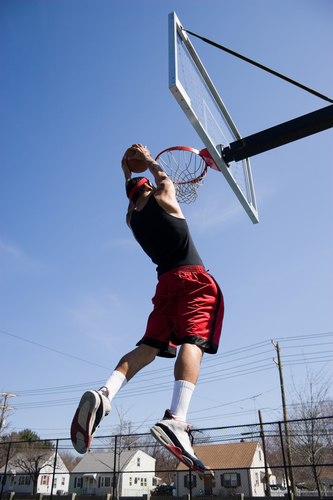In 1961 Lloyd Collins took on a role that he’d long remember… creating favorite memories to last a lifetime. He agreed to serve as the University of Louisville Cardinal Bird mascot. Originally from Alton, New York, Mr. Collins was a trumpet student in the University of Louisville School of Music from 1959 to 1963. During a recent visit to Louisville orthopedic surgeon Dr. Stacie Grossfeld, Mr. Collins mentioned his time as one of the original Cardinal Birds…And that is where the idea for this interview begins.

Mr. Lloyd Collins as an original U of L Cardinal Bird
Q: What was college life like for you?
A: I worked my way through college, washed pots and pans at the school cafeteria to get my food. I had a small band scholarship for a couple hundred dollars, but I really worked my way. In order to earn extra money, I sang at Highland Pres in the choir and got paid 20$ month. And I gave trumpet lessons at a music center downtown. In order to earn my lodging at school, I was a dorm counselor and the resident hall manager. Anything you want badly enough is worth working for. My parents were hard-working farmers from upstate New York.
Q: Why did you decide to go to the University of Louisville?
A: My band director in high school was getting his Master’s degree at U of L in the summer time. He told the U of L band director, Professor Leon Raper, that he had a good trumpet player. I auditioned. And they offered me a small scholarship to play in the band.
Q: How did you end up becoming the 3rd “Cardinal Bird”?
A: The cardinal bird originated out of the U of L marching band. The first two guys to serve (Dick Dyson and Sam Badgett) were students in the Speed School of Engineering. When Sam was getting ready to graduate, I asked the band director if I could do it. He agreed, saying “yes” only if I was willing to continue to march in the band during the games at half-time. So I marched with the band at half-time and would go into the locker room after to put on the Cardinal costume. I enjoyed traveling out of town for ball games whenever possible. The marching band did not travel to out of town games, but I would go with the cheerleaders.
Q: What was the job of “Cardinal Bird” like?
A: Keep in mind that this was not a paying job. I would load up my 56’ dodge and take the cheerleaders along to the basketball and football games. We’d bum together enough money for gasoline and we’d drive to wherever the game was being held. Back in the day, money was tight. Sometimes I couldn’t even afford to get my white pants cleaned and Spalding’s Dry Cleaners was generous enough to comp them on the house.
Q: What did you do as the “Cardinal Bird”?
A: During the games I loved going out on the field or at Freedom Hall to perform, often with a hula hoop. One of the high points of the game involved the time when I would lay a cardinal bird egg.
Q: What was it like wearing the original “Cardinal Bird” costume?
A: As you can imagine, wearing the cardinal bird costume was incredibly hot. In fact, I actually lost between 5 and 10 pounds from sweating every time I wore the costume. The papier-mâché head was so top-heavy, it was hard to keep it from falling off…
Q: What was the “Cardinal Bird” costume like when you wore it?
A: The costume included white paints, white spats, and black shoes. I wore a black long-tailed colonels coat pulled over a big pillow with a felt covered L that hooked to my head. The head piece was made out of papier-mâché (which I inherited from the previous cardinal birds). The head was attached to a pith helmet with straps that went under my shoulders and arms. And while wearing the mask, I could only see through one eye hole. (more…)

 The
The 
 A concussion is a kind of brain injury that is typically caused by a fall, hit, or shake to the head. The long-term damages caused by concussions are an increasing concern for athletes in many different sports, including female soccer players.
A concussion is a kind of brain injury that is typically caused by a fall, hit, or shake to the head. The long-term damages caused by concussions are an increasing concern for athletes in many different sports, including female soccer players.




Recent Comments